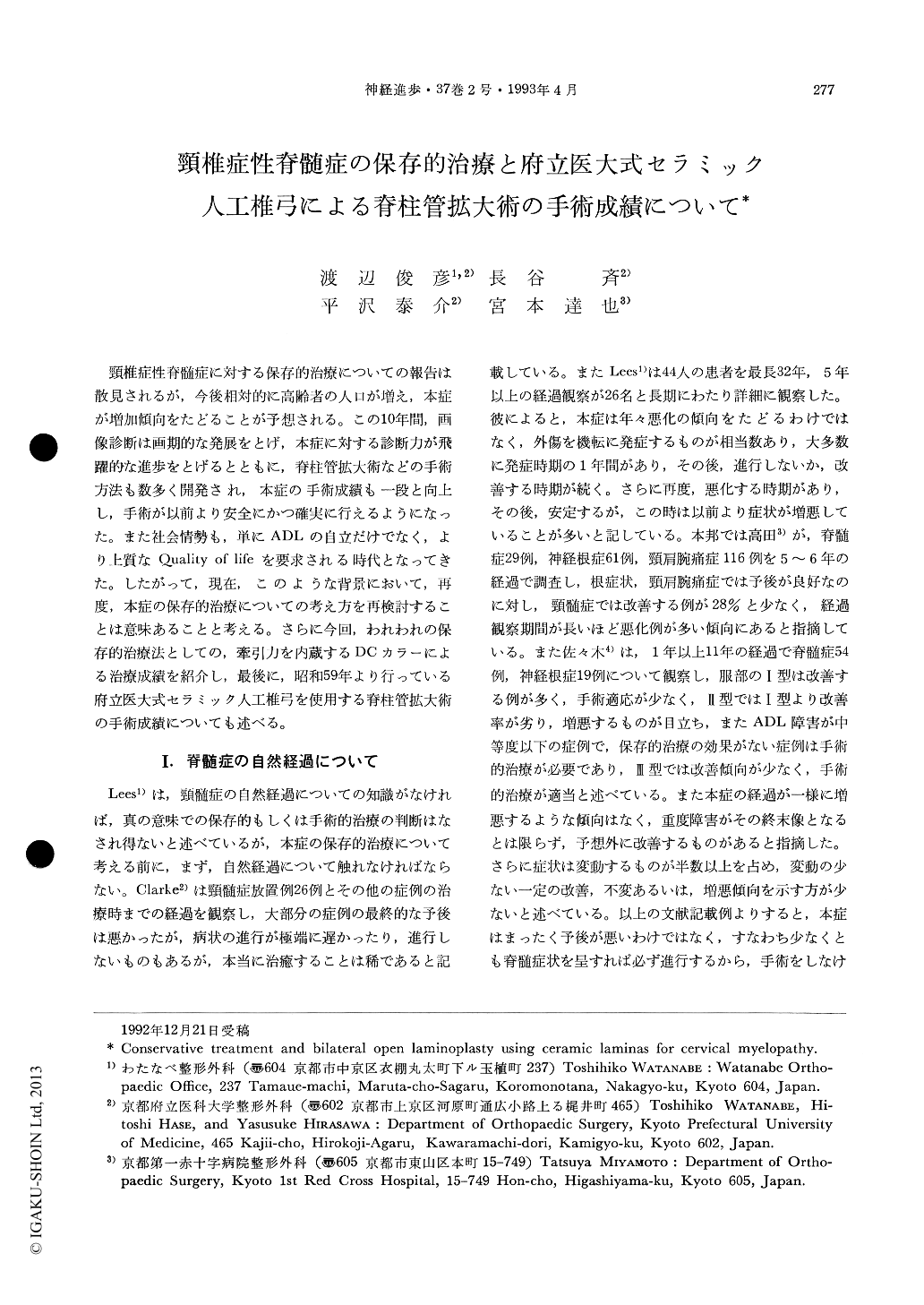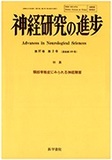Japanese
English
- 有料閲覧
- Abstract 文献概要
- 1ページ目 Look Inside
頸椎症性脊髄症に対する保存的治療についての報告は散見されるが,今後相対的に高齢者の人口が増え,本症が増加傾向をたどることが予想される。この10年間,画像診断は市画期的な発展をとげ,本症に対する診断力が飛躍的な進歩をとげるとともに,脊柱管拡大術などの手術方法も数多く開発され,本症の手術成績も一段と向上し,手術が以前より安全にかつ確実に行えるようになった。また社会情勢も,単にADLの自立だけでなく,より上質なQuality of lifeを要求される時代となってきた。したがって,現在,このような背景において,再度,本症の保存的治療についての考え方を再検討することは意味あることと考える。さらに今回,われわれの保存的治療法としての,牽引力を内蔵するDCカラーによる治療成績を紹介し,最後に,昭和59年より行っている府立医大式セラミック人工椎弓を使用する脊柱管拡大術の手術成績についても述べる。
Recently a diagnostic method for cervical spondylotic myelopathy has progressed by the remarkable advancement of Magnetic Resonance Imaging, and the results of surgical treatment have also progressedby the technical advancement of the operation. On the other hand, people are asking for a higher quality of life with a reflection of changing social conditions. Then, the role of surgical treatment seems to be increasing on the treatment of cervical spondylotic myelopathy. In our hospital, if patients have some motor paresis in lower extremities, we would prefer operative treatment. As a conservative treatment for the mild cervical spondylotic myelopathy patients, we use a distraction cervical collar (DC Collar) that acts upon the neck using traction. Patients can do cervical traction treatment con-tinuously in their home by using this collar. Evaluation of 36 patients with mild cervical spondylotic myelopathy was done using DC collars who had been followed from one to three months. The results showed 61% improvement on the 36 cervical spondylotic myelopathy patients. In 14 cases who had been followed for more than 5 years, improvement could be maintained on 12 cases after the first conservative treatment by DC collar. Since January 1984, as an operative treatment, we have been treated by laminoplasty with artificial laminas in Kyoto Prefectural University's Hospital of Medicine. This procedure is technically simple because artificial ceramic laminas are only placed between the bilateral opened laminas using the method developed by Dr Kirita. On the 65 cases over a two year follow up period, results showed 65% improvement on the Japanese Orthopaedic Association scoring system, and 72% in cases with no other complications. The artificial lamina appeared well adapted to laminas in computed tomography and dynamic radiographic examinations, and there were no cases of reduction of the enlarged canal, and no complications by artificial ceramic laminas.

Copyright © 1993, Igaku-Shoin Ltd. All rights reserved.


